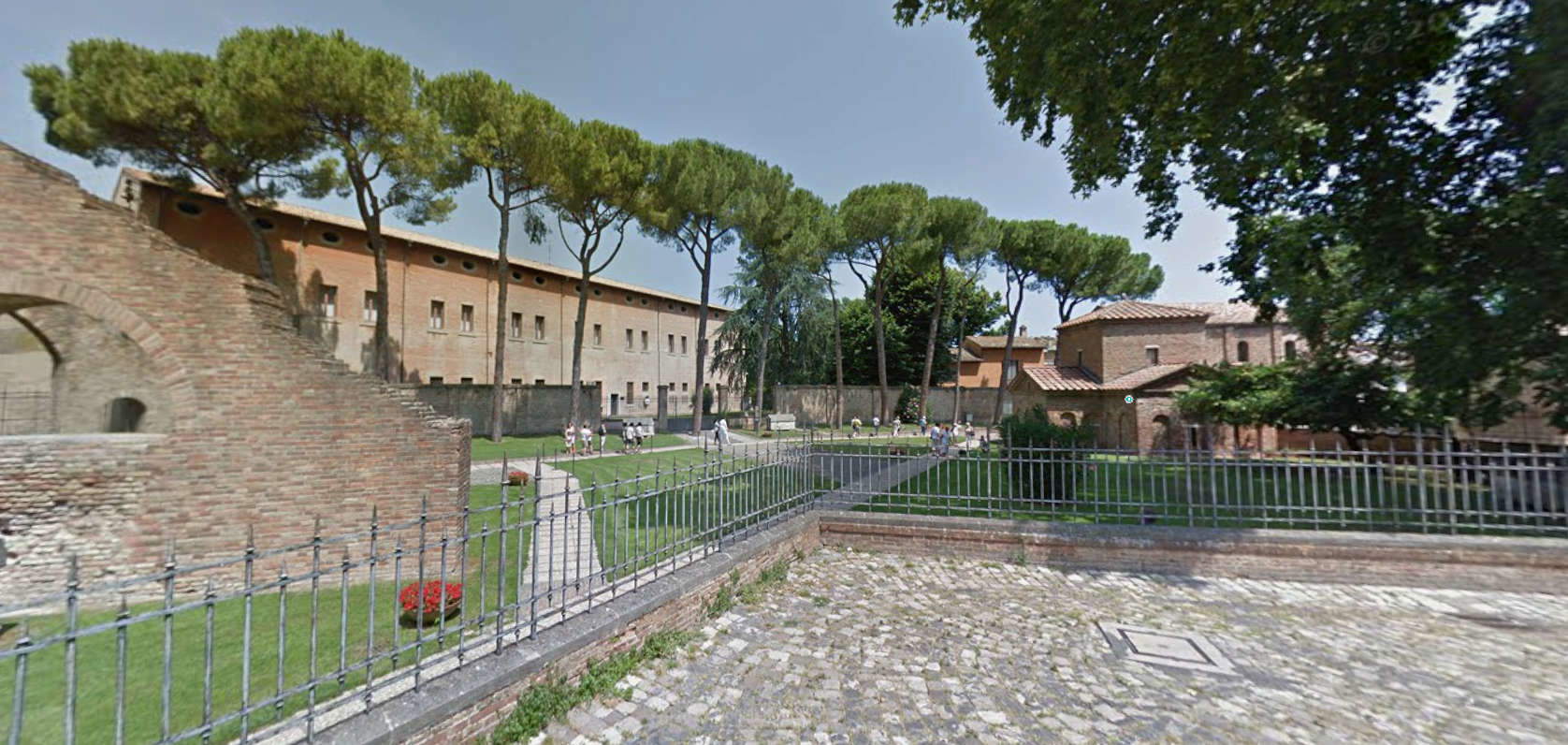Tension in Ravenna over the shadowy felling of pine trees surrounding the Mausoleum of Galla Placidio, a UNESCO World Heritage Site. The Romagna city is in fact at the center of a controversy, denounced by Italia Nostra, concerning the possible destruction of an environmental and historical context of inestimable value. The situation has come to a head with the imminent announcement of the felling of twelve monumental domestic pines that have defined the landscape surrounding the Mausoleum of Galla Placidia, a site recognized by UNESCO as one of the world’s most valuable settings, for some eighty years.
The row of pine trees, according to Italia Nostra, is to be considered an extraordinary element, protected by law on par with the precious early Christian monumental area that visually connects with the nearby Basilica. The twelve trees, a number that also takes on a symbolic meaning, not only represent a focal point for the city of Ravenna, but are seen as a symbol of Italy as a whole, since they are not maritime pines but domestic or italic pines, a typical essence of our country.
The affair that led to this decision dates back several months ago, when “a Milanese architect visiting our city,” reconstructs the Ravenna section of Italia Nostra, “decided to launch a crusade against the pine trees of San Vitale and Galla Placidia, sending notices left and right to get them removed.” The trees would in fact be at risk of falling: the Diocese, after the architect’s alarm, had technical analyses carried out and it emerged that at least six of the pines were dangerous and therefore had to be cut down. Italia Nostra then took action, together with the civic group “Salviamo i pini di Lido di Savio e Ravenna,” had another inspection carried out and, according to reports, “visually found the pines in good health.”
At the time, the Superintendent’s Office put up a sign on Thursday, Nov. 20, announcing the impending felling. Regarding the methodologies used, the notice mentions conducting tensile tests. The associations, however, point out that such tests are not definitive evidence for issuing a felling “condemnation” for the trees, and that the results obtained need to be thoroughly analyzed and compared, as has been done in similar recent cases, especially if there is a desire to preserve the specimens. The associations also argue that the destruction of trees cannot take place without first exhausting all the most accurate and thorough evaluations, which should aim first and foremost at the protection of the Early Christian Mausoleum, but also at the preservation of the tree line. Removal of the trees should be considered only after screening every possible alternative, including the possibility of restoration for possibly irrecoverable trees.
In response to and imminent destruction, the group Salviamo i pini and Italia Nostra have therefore intensified their actions. They have sent an extremely urgent request for access to the records and have launched a direct appeal to the Mayor of Ravenna to intervene with the Diocese and the Superintendency to avert what they assess as irreparable damage to a unique historic asset of the city.

To support their position, after a public demonstration held at the pines of Galla Placidia, the associations sent an open letter to Monsignor Lorenzo Ghizzoni, Archbishop of Ravenna. The missive was accompanied by an Assevered Technical Report, drawn up in February 2025 by forestry doctor and arboriculturist Gian Pietro Cantiani, the result of a specific inspection, which concluded that all the pine trees were in good condition.
Also joining in support of the cause was the contribution of Professor Andrea Padovani, former professor of the History of Medieval and Modern Law at the University of Bologna and of the History of Canon Law. Professor Padovani participated in the presidium to protect the pine trees on Sunday, November 23, bringing his support to the tree preservation cause. As a final legal move, Italia Nostra Ravenna Section and “Salviamo i pini di Lido di Savio e Ravenna” have formalized and sent a cease and desist letter to both the Superintendency and the Diocese. The notice aims to block the felling of the specimens until the obligations of transparency and sharing the results of the investigations with the citizenship are fully complied with, given the universal importance of the site. The associations also demand that the content of these findings be analyzed in a timely manner by reputable experts on behalf of citizens and associations. What is at stake is the preservation of what has been handed down, avoiding taking this heritage away from the enjoyment of future generations.
 |
| Alarm over pine trees at the Mausoleum of Galla Placidia in Ravenna, at risk of being felled |
Warning: the translation into English of the original Italian article was created using automatic tools. We undertake to review all articles, but we do not guarantee the total absence of inaccuracies in the translation due to the program. You can find the original by clicking on the ITA button. If you find any mistake,please contact us.